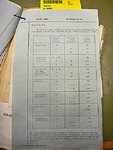I know this is going to sound like a stuck record but the LR fighter problem for the RAF wasn't equipment, it was will.
I see. So, they get will and waive magic wand, and voila! Long range fighter..? sorry.. you are very optimistic.
If the RAF wanted long range fighters they had
a) the Tempest which had a combat radius of approc 1,150 miles using 90 gallon Drop Tanks which isn't so far off the Mustangs 1,335 miles combat radius
b) an extended range Tempest which had the same combat range of the Mustang
Except: combat radius of Tempest V - 404 miles, not 1150.. see? http://www.wwiiaircraftperformance.org/tempest/temprange.jpg
c) they could have used the modified Spitfire (note the USA and Vickers both produced extended range spits with the same fuel capacity) which had a combat range of 1,150, not as far as the Mustang but pretty good
Spitfire had about 100-150 miles radius. How does it become ten times..? Magic wand? A tank of 850 gallon..?
Major factor: 1 great drag of airframe 2 great consumption of engine.. it was built-in disadvantage of design to have small range..
d) they could have put greater effort into the Hornet which entered production in early 1945. This had a combat range of 1,410 miles
But, in 1943, it would have 1943 engines.. meaning same as Spitfire, ie. Merlin 61 or 63, 66, in best case.. what would performance look like with so less power?
All of these options would be easier and quicker than trying to build the P51 in the UK. The Tempest in particular would be a good option.
I agree, especially last sentence.. Tempest had potential.. but I do not think practically doable.. in 1943. You need faster development of airframe, when Typhoon is still do not work, when Sabre still do not work.. how.. even 1945 - Tempest was rare aircraft. One unit, that is.. How mass produce it two years early?

